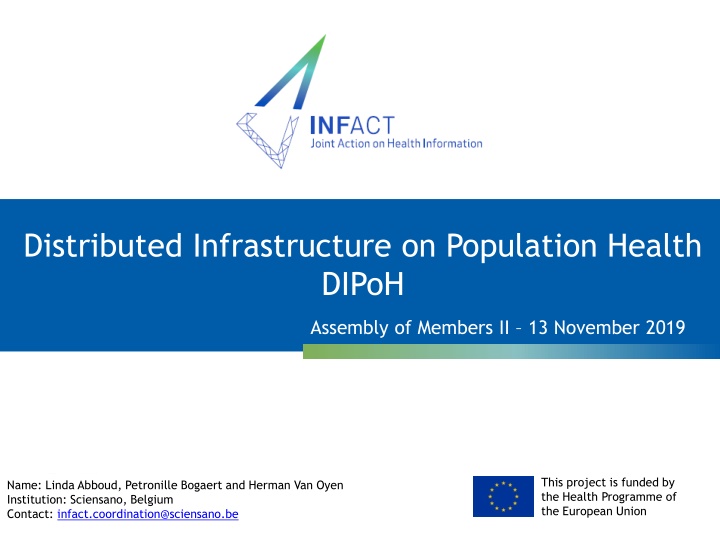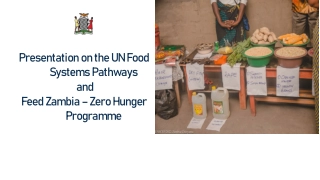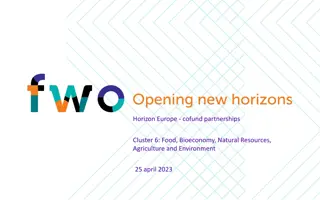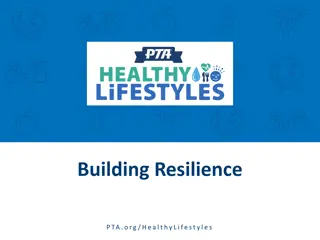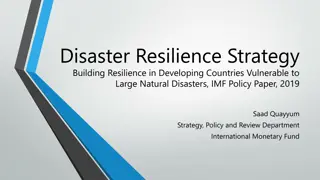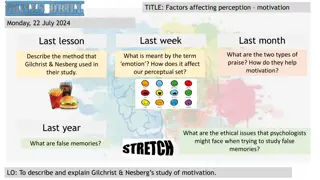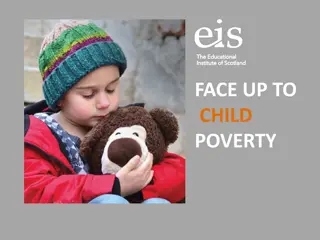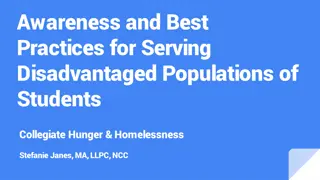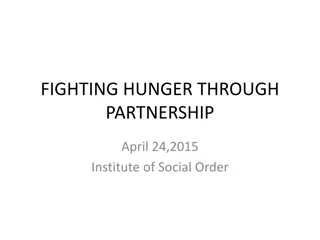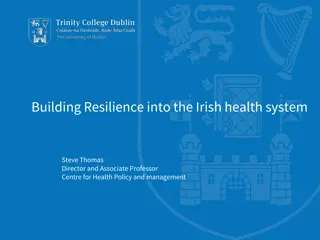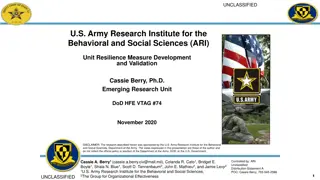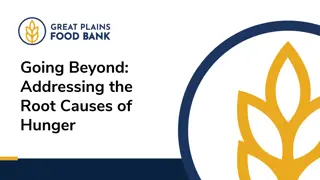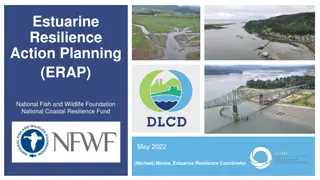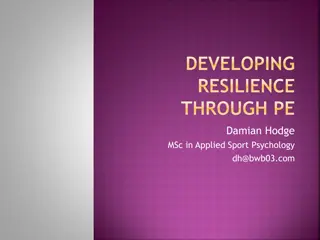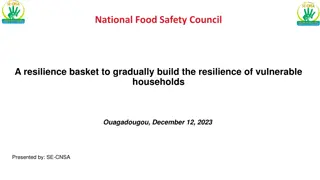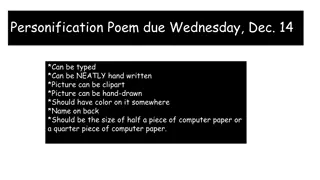Developing Partnerships for Research: Reduced Hunger and Stronger Resilience
Contribute to poverty reduction through policies and interventions for vulnerable rural households' nutritional status. AgriDiet project in Ethiopia and Tanzania focuses on agriculture-nutrition linkages. Success factors include research theme alignment, trust-building, shared ownership, policymaker engagement. Challenges involve meeting policy-maker expectations and longer timeframes for outcomes.
Download Presentation

Please find below an Image/Link to download the presentation.
The content on the website is provided AS IS for your information and personal use only. It may not be sold, licensed, or shared on other websites without obtaining consent from the author.If you encounter any issues during the download, it is possible that the publisher has removed the file from their server.
You are allowed to download the files provided on this website for personal or commercial use, subject to the condition that they are used lawfully. All files are the property of their respective owners.
The content on the website is provided AS IS for your information and personal use only. It may not be sold, licensed, or shared on other websites without obtaining consent from the author.
E N D
Presentation Transcript
Distributed Infrastructure on Population Health DIPoH Assembly of Members II 13 November 2019 This project is funded by the Health Programme of the European Union Name: Linda Abboud, Petronille Bogaert and Herman Van Oyen Institution: Sciensano, Belgium Contact: infact.coordination@sciensano.be
Challenges FRAGMENTATION INEQUALITIES PROJECT BASED Disperse knowledge Incomplete data Difficult access Differences in quality Diversity in research capacity No long term planning Waste of resources Duplication Need for EU health information infrastructure
Need for infrastructure 1. Need for European strategy health information Improved coordination between various health information activities (by different DGs, different agencies, different projects, etc.); Need for interdisciplinary cooperation with non-health sectors and civil society; Improving the link between health information activities including research and development, and policy needs; Need for decisions on common issues; Create synergies and sustainability between projects and health information activities. Need for coordination and collaboration in health information.
Need for infrastructure 2. Data harmonization, collection, processing and reporting Harmonization of data definitions and indicators between countries; Standardised methodological approach to data collection (adapt to culture etc.); Facilitate sharing and exchange of harmonised data at individual and population level; Harmonized EU wide health reporting (including data visualizations); Ensure sustainable data collections and data availability for evidence- based public health; Better usage of collected data. Better data quality and comparability.
Need for infrastructure 3. Comparison and benchmarking among MS and for Europe Assess quality and efficiency health care systems; Assess inequalities in Europe; A unified general picture of health situation in Europe; Addressing health determinants that operate across national boundaries. 4. Knowledge sharing and capacity building Diminishing the health information inequalities between countries; Developing knowledge and expertise and facilitating the exchange of knowledge and expertise including good practice examples.
Need for infrastructure 5. Transferability of health information research and evidence- based policy making Developing, implementing and evaluating regional, national and EU actions; Effectiveness and efficiency of public health interventions; Respond effectively to population health and health systems challenges; Fast health analysis for preparedness and research; Efficient spending of resources. Use research for evidence-based policy making, monitoring and planning.
Options Strengthen existing structure ECDC, JRC, Eurostat, DG SANTE. Outsourcing: WHO, OECD Create new independent structure Independent new EU agency Set up a Research Infrastructure European Research Infrastructure Consortium (ERIC)
ECDC Strengths All member states can be involved Can have a mandate to lead ECDC is topic-driven (knowledge driven), know how to store data (GR4) Weakness An extension of the ECDC would require an amendment of the ECDC founding regulation. A decision of the European Parliament and of the Council would be needed to install a separate surveillance system.
Cfr. services Cfr. scope
ECDC Weakness: The annual budget of the ECDC would need to be increased and would require a financial commitment by the Commission. Need political support by EU Member States Would require appropriate resources at EU level that are currently not available (according to the Commission). Too orientated towards infectious diseases it should be very clear in their mandate that they have a task other than infectious diseases ECDC has an all-in-one approach; this might be a model for a long-term solution.
Eurostat Strengths Statistical authority of the EU Development, production and dissemination of European statistics Coordination of statistical activities of Community institutions European statistics: defined by the European statistical programme (i.e. ESS surveys, collections of administrative data, legal basis or gentlemen's agreement) Weaknesses Eurostat is really statistical data oriented No clear link with Ministries of Health or Research, mostly link with statistic institutions No public health thinking as main function
JRC JRC: mission is to provide EU policies with independent, evidence-based scientific and technical support throughout the whole policy cycle. In public health the institute contributes to harmonisation of cancer and rare diseases care in Europe; promotion of healthy diets and life style; disease prevention by countering of environmental and behavioural factors. JRC is funded from Horizon 2020 and by Commission services
JRC Strengths Limited tasks in health but may develop expertise in registries Research orientated Weaknesses Unclear priority setting Budget within EC subject to cuts Mandate should be adapted Limited population health knowledge
DG SANTE Strengths The basis for activities is public health. Weaknesses Setting up a new unit means budget and staff will need to be reallocated Possible lack of continuity and political support Conflict between strategic policy development and practical day- to-day routine work on health information
e) Outsource: WHO, OECD Formalise cooperation with international organisations Strengths Experience and expertise Influential to Member States (MS) Reduction of reporting by MS Weaknesses Not fit for health information needs in EU Own agenda Limited research and new data development Limited funding Knowledge is moved to international organization Setting up of Memorandum of Understanding MS are not part of bilateral agreement
Options Strengthen existing structure ECDC, JRC, Eurostat, DG SANTE. Outsourcing: WHO, OECD Create new independent structure Independent new EU agency Set up a Research Infrastructure European Research Infrastructure Consortium (ERIC)
Independent new EU agency Strengths Tailored to specific needs, focus on what you want They have their own voice better advocacy and visibility Clear vision and goals Link with international organisations Familiar model Ministries of health and research work together Weaknesses Need to start from scratch, not existing Lot of work Need for strong political will Would take a long time to be set up (Those who seed will not harvest) No legal framework
Research Infrastructure Allows responses to current needs and demands with high usability for Member States and EU institutions focus efforts on priority aspects Has possible funding mechanisms: participation in calls of MS, EC and MS contribution Ensures linkage with the scientific community, national infrastructures and international organisations Is a flexible tool: reduction or expansion of activities based on the health information needs. Can provide relevant information for decision makers and has the capacity to bring together different actors in health information Can ensure continuity of existing health information activities Is the most feasible solution in the current setting
www.inf-act.eu @JA_InfAct This project is funded by the Health Programme of the European Union
